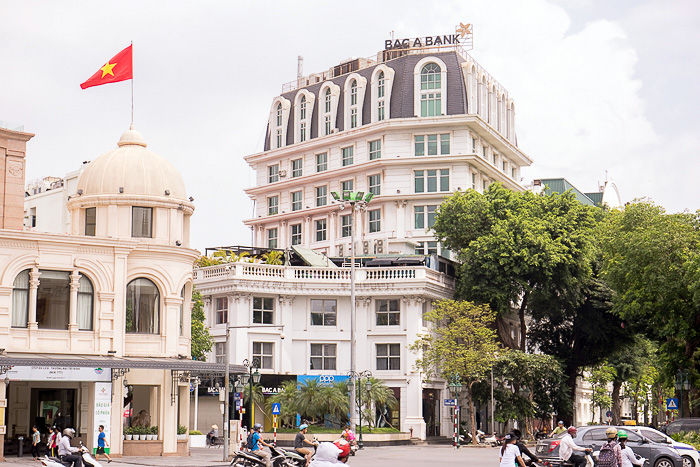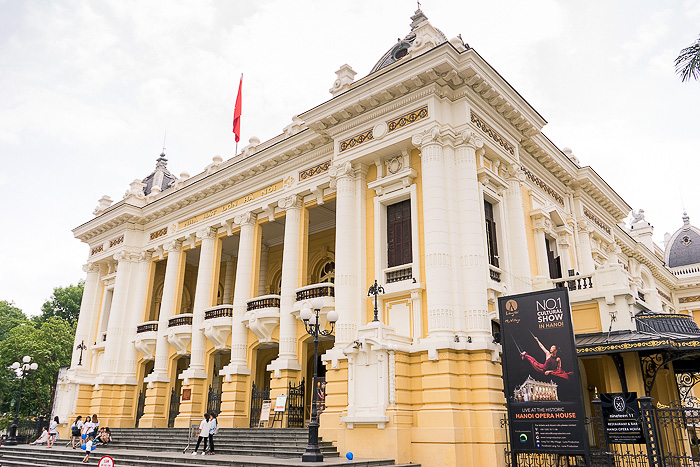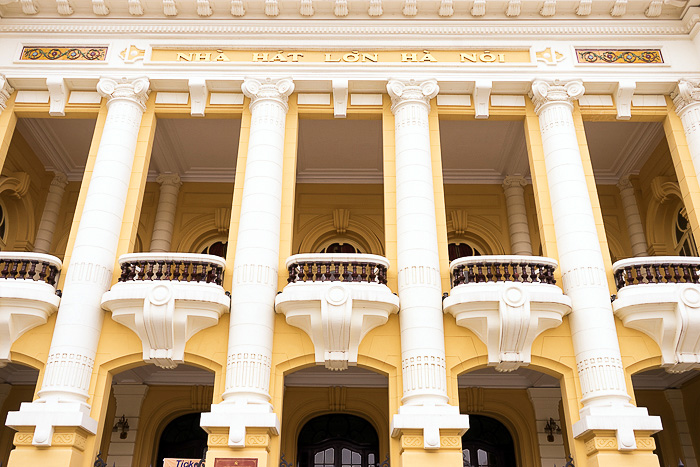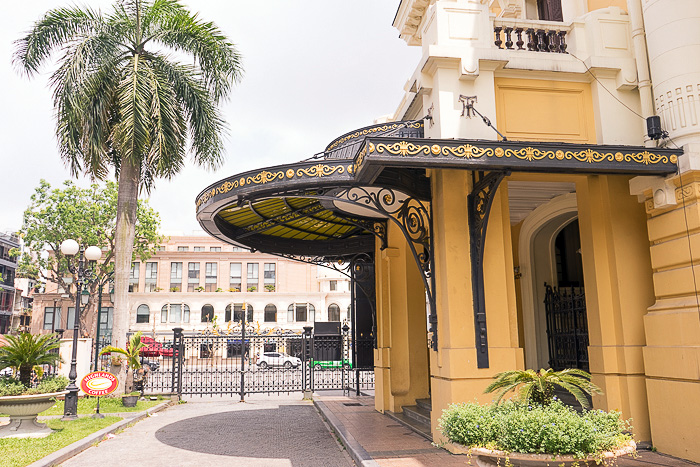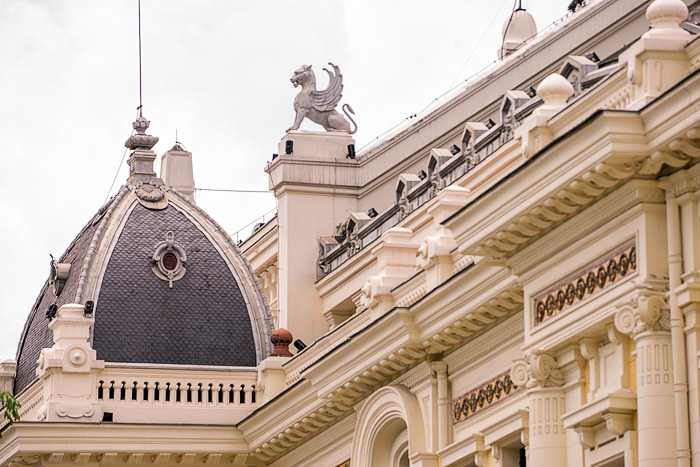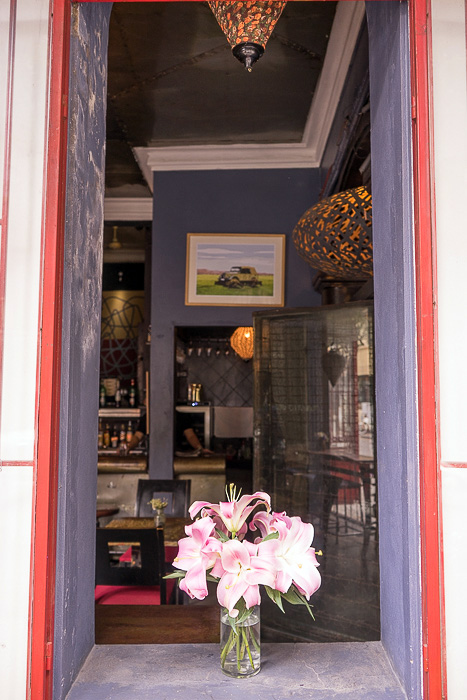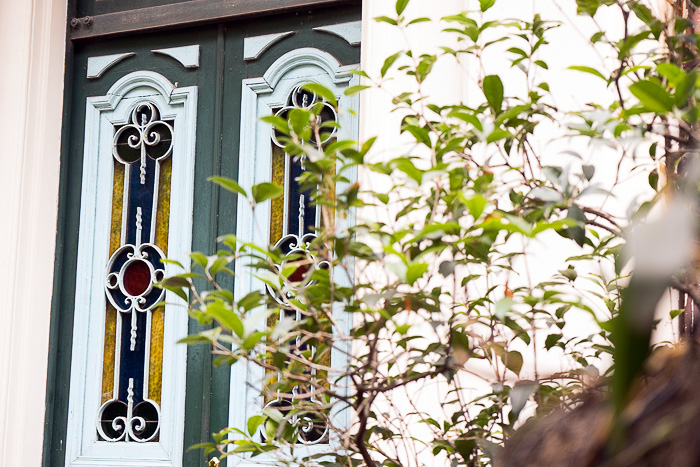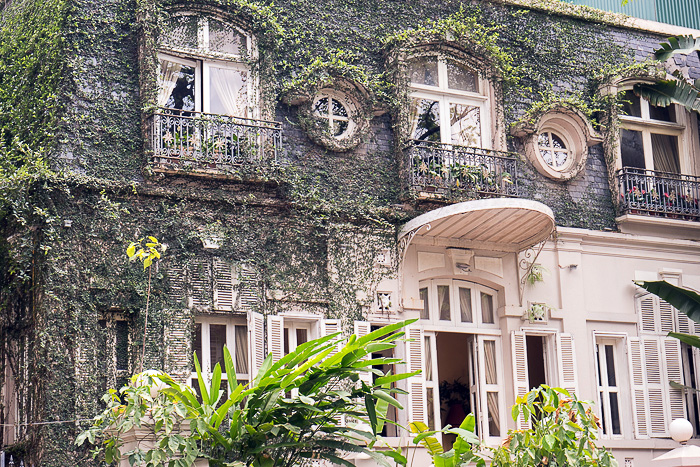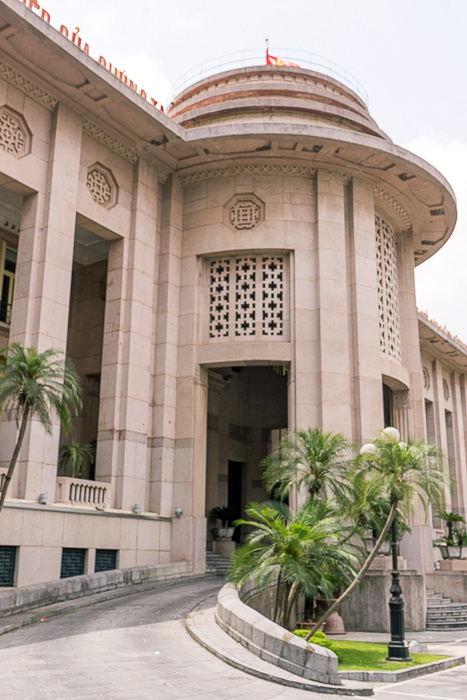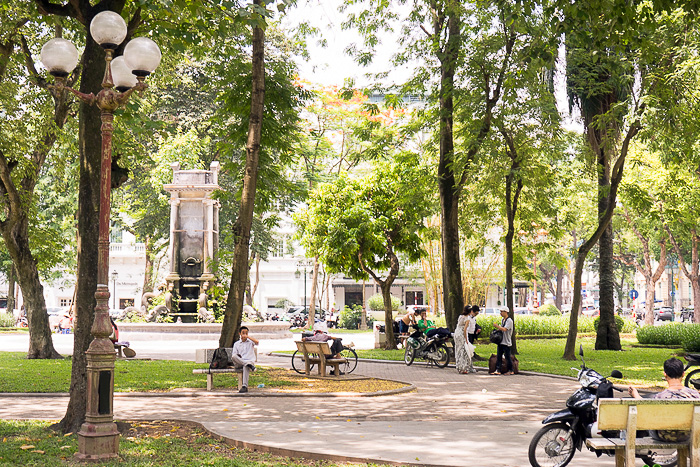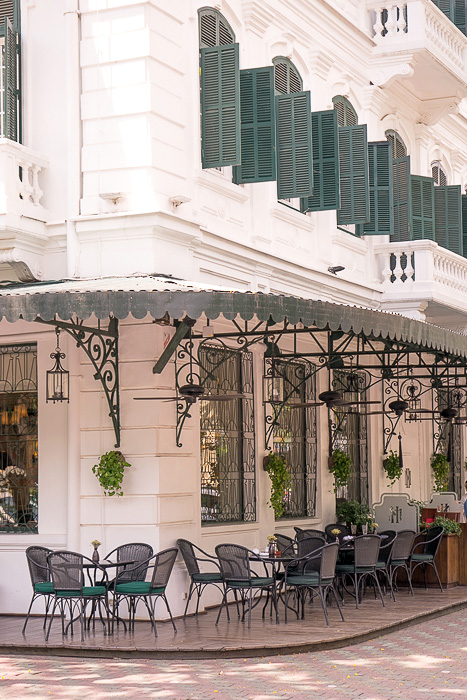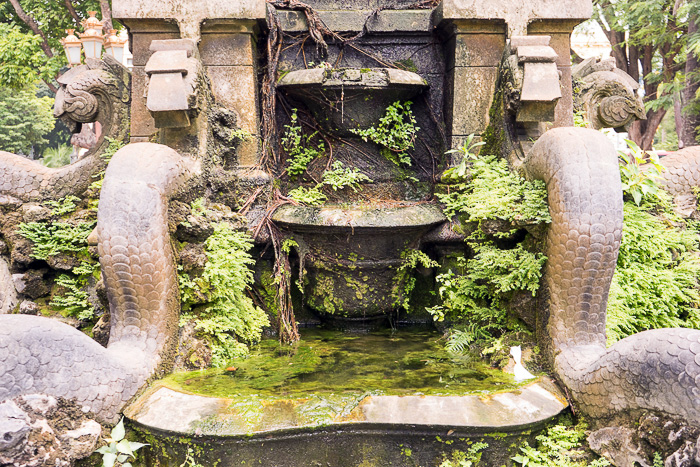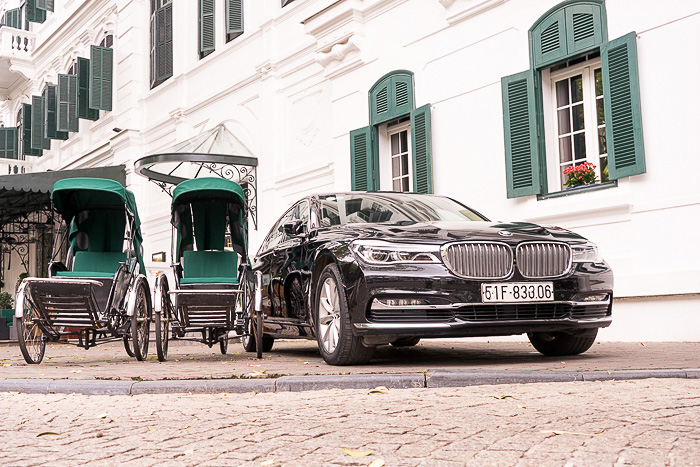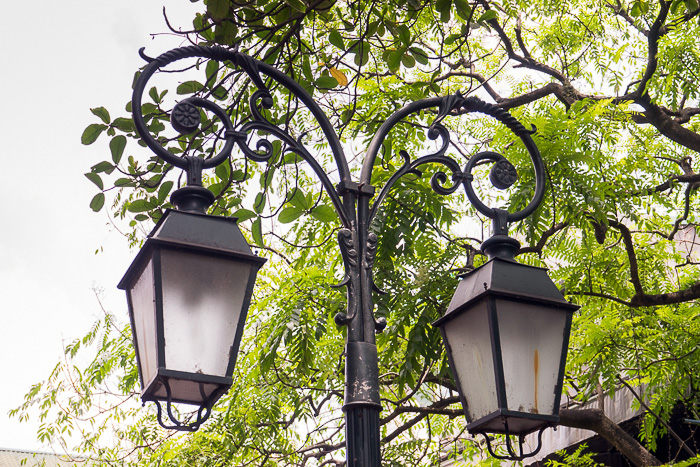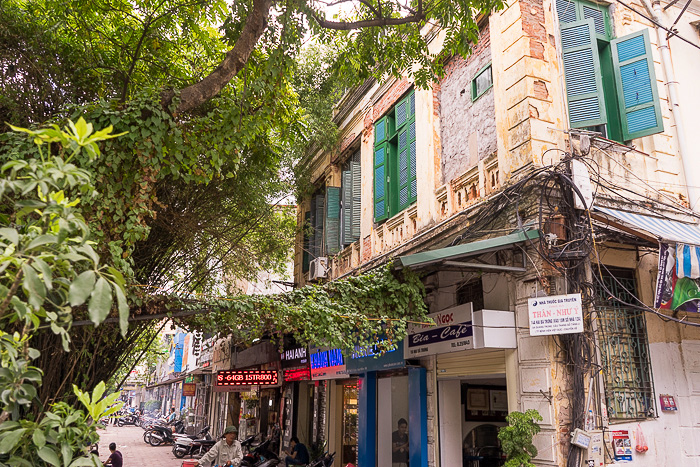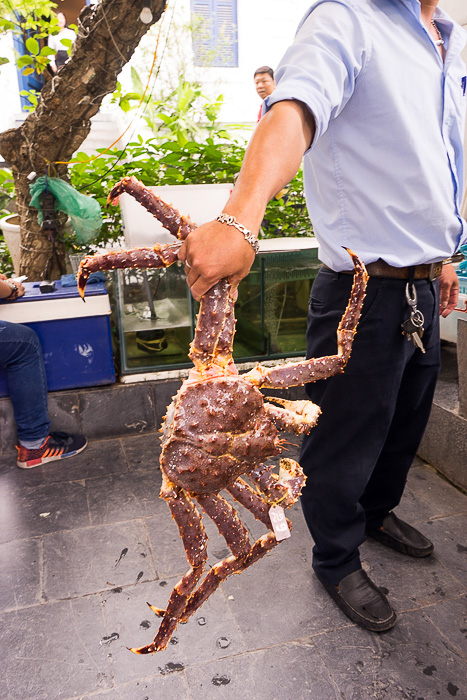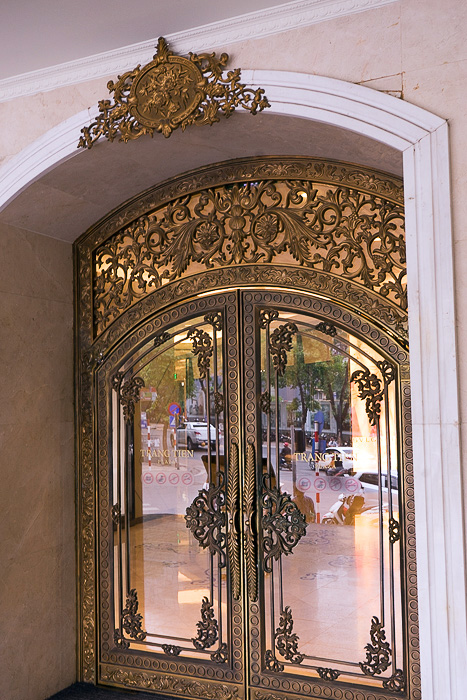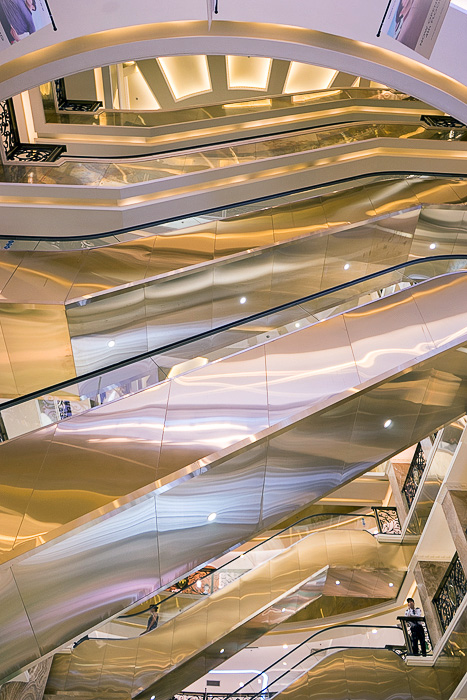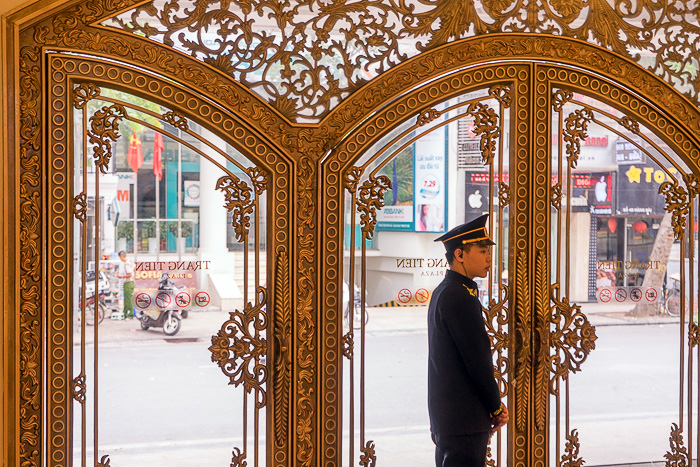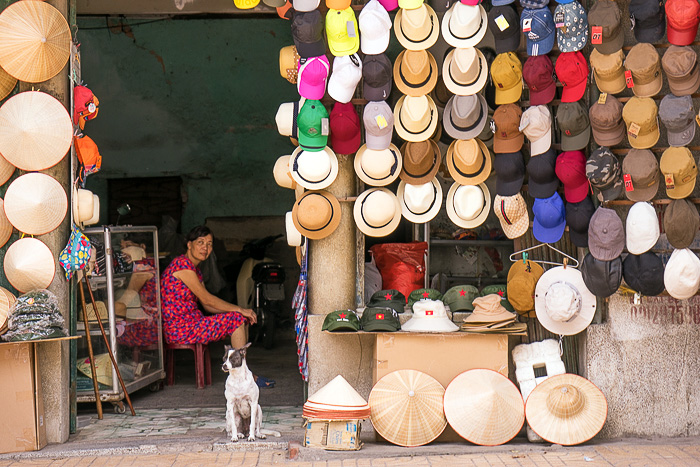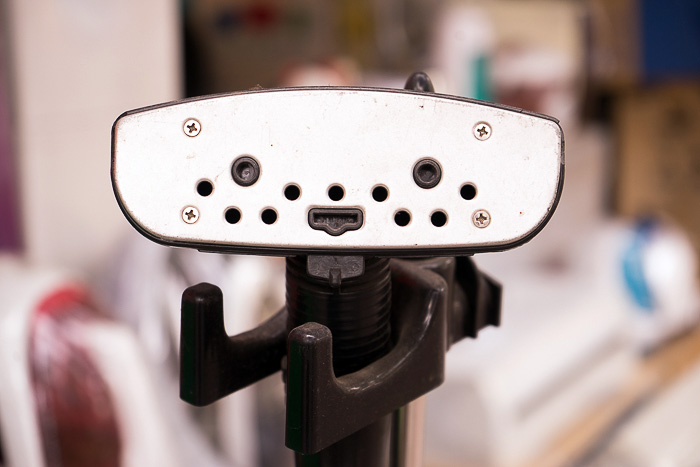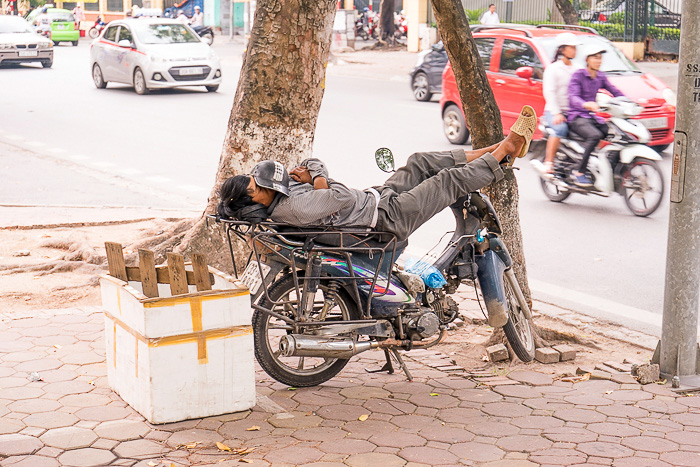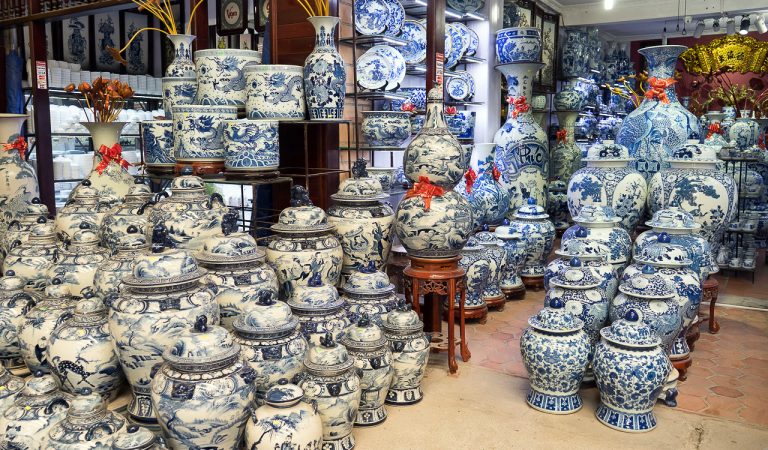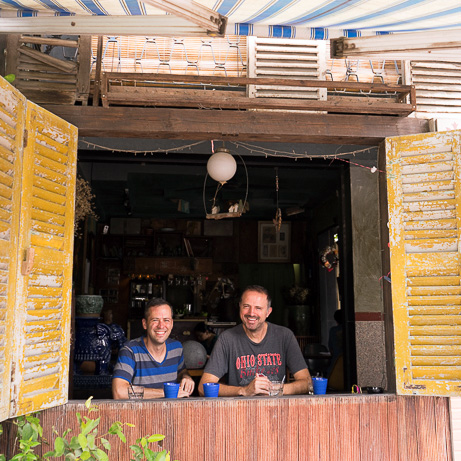Hanoi’s French Quarter
Let’s face it. After enough time in Vietnam, there are going to be days where you’ve had enough time in Vietnam. The constant noise, impossible sidewalks and horrifying traffic eventually wear down the optimism of even the most passionate traveler. But escape is possible. Just head to Hanoi’s French Quarter, where the streets are wide and clean, and the atmosphere is nearly European.
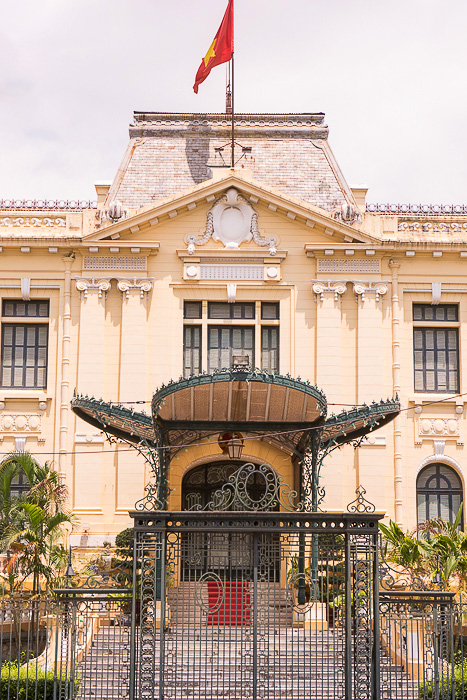
North Vietnam was the final piece in France’s colonial Vietnamese jigsaw puzzle. After a brief war with China, they established the “Protectorate of Tonkin” in 1883, with Hanoi as its capital. The French delegation immediately set about restructuring their colonial capital in accordance with their tastes, starting with the district southwest of Hoàn Kiếm Lake.
Hanoi’s colonial masters are long gone, but their influence remains. Walk down Tràng Tiền, with its wide sidewalks and upscale shops and you could almost (but not quite) believe you’re in Paris. The buildings mostly preserve their colonial architecture, and grand structures punctuate most of the avenues.
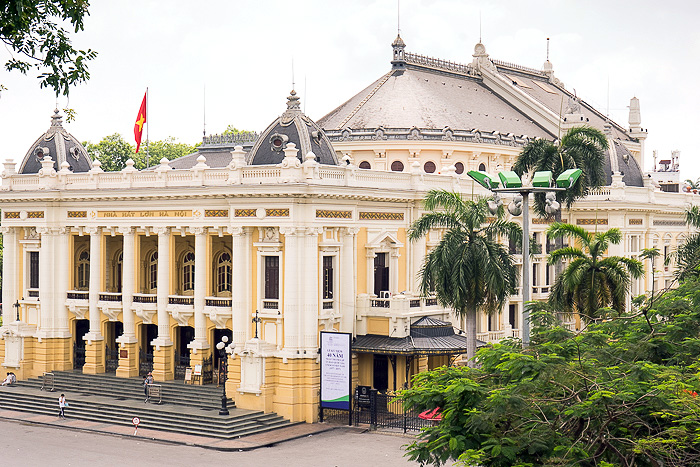
The most striking of the remnants is the massive Hanoi Opera House. Built between 1901 and 1911, it’s based on Paris’ Palais Garnier, and positively dwarfs the Saigon Opera House. We never made it to a show, however, and tours are only available for those who have purchased tickets, so we have no idea what the interior is like.
Nearly as impressive as the Opera House is the 5-star Metropole Hotel, the most historic in Hanoi and probably the most well-regarded in all Vietnam. Since opening in 1901, the Metropole has been an integral part of the city. Graham Greene wrote The Quiet American while staying as a guest, Charlie Chaplin honeymooned here, and Joan Baez recorded the anti-war classic Where Are You Now, My Son? from one of the Metropole’s rooms, during the 1972 Christmas Bombing campaign. The air-raid sirens can be heard in her recording. The hotel has maintained the underground bunkers which were used to protect guests during such attacks, although you have to be a guest if you want a tour.
Other historic buildings in the French Quarter include the infamous Hỏa Lò prison, better known as the Hanoi Hilton, and the excellent Vietnam National Museum of History, which was built by French architect Louis Finot in 1932.
But even more than the grand buildings, the best thing about the French Quarter is its relative tranquility. This is still Vietnam, so there’s going to be some craziness, but it’s definitely been dialed back, here. We even discovered something we’d previously thought impossible: a Vietnamese traffic light which everyone obeyed! I crossed the street without fear, while the cars and even the motorbikes waited patiently for their turn.
Next, we toured the parks of Lý Thái Tổ and Con Cóc, both of which have sculptures which are worth checking out. Con Cóc’s is the Chavassieux Fountain, which was erected in 1901 and looks every bit its age. And a giant statue of 11th-century Emperor Lý Thái Tổ dominates the park which shares his name. He was the one who moved the capital of the Viet to Hanoi, and who is usually credited as the city’s founder.
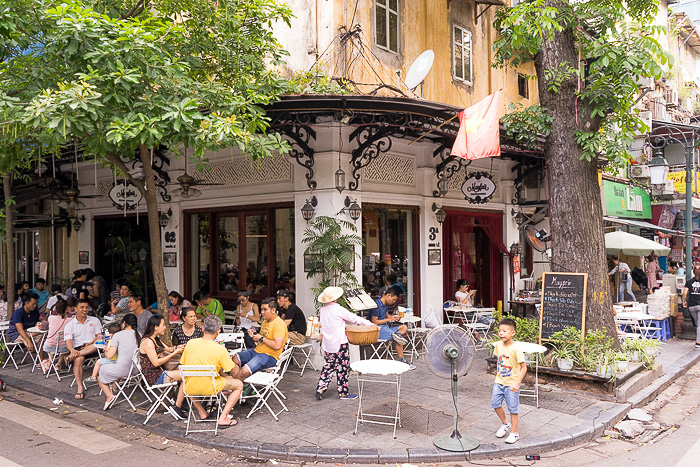
We were touring the French Quarter during another of Hanoi’s sweltering days, which meant that only so much sightseeing was possible. After having walked through the parks, we headed toward the alley of Nguyễn Xí, where we collapsed onto stools and ordered iced coffee. Despite an abundance of cafes on this alley, we were lucky to find a spot; nearly every seat was occupied by another family. The French Quarter might be the least Vietnamese spot in Hanoi… but it’s one of the most popular.
Locations on our Map: Hanoi Opera House | Metropole Hotel | Nguyễn Xí Alley
Hanoi’s French Quarter Photos and a Video
